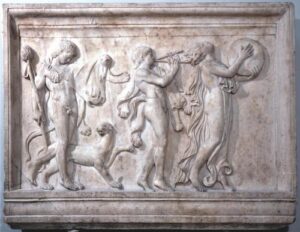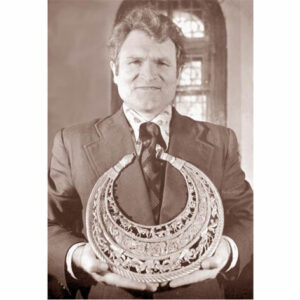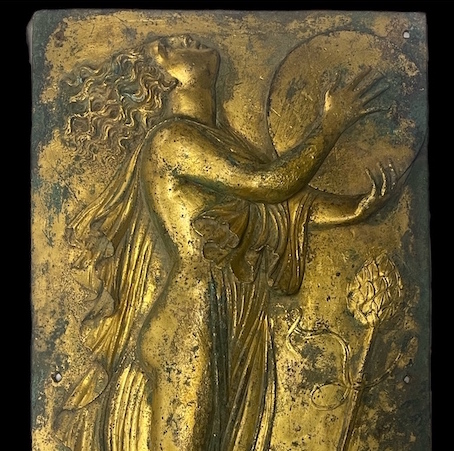MET Director Hollein Cites Proactive Policy to Return Art to Source Countries

Chinese art display in the Metropolitan Museum of Art, NY. Photo Sailko, 22 September 2010, CCA-SA 3.0 Unported license.
Capping a year in which there have been six seizures by the Manhattan District Attorney’s office from New York’s Metropolitan Museum of Art and in which numerous Italian and Egyptian artifacts have been returned by the museum, Director Max Hollein told foreign journalists on September 28th that the Met has developed new policies on identifying objects that left countries illegally. Agence France Press reported that Hollein said, “We don’t want to have any object in our collections that came illegally.” Hollein added, “You will see and hear from the Met museum not only about more outcome from our research but actually more restitutions, more returns and more collaborations with those countries.”
Earlier this year, on May 11, Hollein had announced that a 4-person team of provenance investigators would work with curators to “broaden, expedite and intensify our research into all works that came to the Museum from art dealers who have been under investigation.” In addition, a panel of 18 curators and other art experts would review collections policies and practices. The research would focus on artworks that were acquired between 1970 and 1990.
Beijing’s Palace Museum Announces Digitization of Over 900,000 Items

Chayinge, the Palace Museum, Beijing, CCA-SA 4.0 license.
Now that there is intense global focus on the importance of collections documentation, China is trying to ward off criticism that its government museums do not meet modern standards in cataloging and providing public access to its collections. On October 17, Director Wag Xudong announced that Beijing’s Palace Museum has digitized 900,000 objects, about half of its artifacts. Information on the content of these records was not given, except that only 100,000 included high-definition images. Palace Museum authorities stressed the benefits of digitization for international cooperation and sharing of resources. China’s government was recently rated the most intrusive collector of detailed biometric data from its citizens out of 96 countries measured. How much more useful it would be to apply this tracking ability to art and to develop a ‘passport’ system enabling the legitimate circulation of art.
N.Y. DA Returns 19 Antiquities to Italy: Allegations Against Michael Ward
An announcement by the N.Y. County District Attorney’s Office of the return of 19 objects to Italy linked long-time New York antiquities dealer Michael Ward to their restitution. An October 17, 2023 article by Eileen Kinsella in Artnet News followed up on the DA’s announcement and identified Ward as the subject of an indictment for criminal facilitation in the Fourth Degree, a misdemeanor. According to the Artnet article, the charges relate to Ward’s business dealings with Eugene Alexander, a Bulgarian dealer currently under investigation by the NYDA. The article states that Alexander is said to have engaged in money laundering through the sale of antiquities to international collectors and dealers for 20 years, Michael Steinhardt among them, using shell corporations and offshore banking operations to disguise the transactions.

Marble relief: a maenad and two satyrs in a Bacchic procession. Excavated by Gavin Hamilton at Roma Vecchia, then in Charles Townley Collection, acquired by British Museum 1805, © The Trustees of the British Museum.
According to the indictment, Ward sent photos of cleaned and restored objects to the Art Loss Register for Alexander as part of a scheme to provide objects with provenance. Ward’s plea agreement states that he worked with Alexander f0r years, purchasing and taking objects on consignment, but learned the full extent of Alexander’s unlawful activities only through discussions with the prosecutors. He admitted signing documents that he knew to be inaccurate. Kinsella writes that Ward affirmed that he will plead guilty to the misdemeanor charge, “with a promised sentence of a conditional discharge for a period of one year…the conditions of which are that he will surrender additional antiquities, if any, that he or [the District Attorney] identifies in his possession that were sold, consigned, or previously possessed by Eugene Alexander.”
(For art history buffs, we note that the District Attorney supplied an image of a gilded bronze plaque (top) with a Maenad and Tambourine as one of the items returned to Italy. The gilded plaque, dated by the DA’s office to between the 1st and 2nd century CE bears a striking resemblance to a Neo-Attic marble bas relief representing a Bacchanalian choral procession in the entry room of the Greek wing in the British Museum. The bas relief if thought to be based on Athenian prototypes of the 4th century BC. It was excavated by Gavin Hamilton in Roma Veccia, then was purchased by Charles Townley for £100. It came to the British Museum from the Townley Collection in 1805.)
Scythian? Not Even Close.

The authentic Scythian gold pectoral.
In late October, Spanish police arrested three Spaniards and two Ukrainians (one claiming to be an Orthodox priest) for attempting to sell eleven pieces of “ancient gold jewelry” worth 64 million euros that were allegedly taken from a Ukrainian church in 2016. The gold objects are now in the custody of Spain’s National Archaeological Institute. One gold object was apparently already sold to a wealthy Spanish buyer.
However, the briefest glance at the pixelated images supplied by police shows that at least two of the items are loosely-based, very poorly executed copies of world-famous Scythian gold pectorals. The most famous of all was found in a royal kurgan (tomb) in Tovsta Mohyla by the archaeologist and poet, Borys Mozolevsky, in 1971. This pectoral is currently still safe in the collection of the National Museum of the History of Ukraine in Kyiv. It is known to be sought by Russia, whose agents have seized every object of Scythian gold from museums in town they seized in eastern Ukraine.

Archaeologist Boris Mozolevski with the authentic pectoral.
Several experts immediately identified the gold objects seized in Spain as fakes. Leonid Babenko, a Ukrainian archaeologist at the Kharkiv Historical Museum further described them as “clumsy fakes” in an interview with the NY Times. He noted that the items they were copied from were “the most prominent and esteemed of all the finds uncovered in 260 years of excavating the Scythian kurgans.” Casper Meyer, a professor of ancient Greece and Eurasia at Bard Graduate Center agreed that if such objects were genuine – which they were not – they would have been worth much more, as Scythian gold of this quality is almost all in big museums, never on the market. Dr. Meyer mentioned that he may have seen some of this gold – or similar objects – in the holdings of a church in Ukraine in 2011 but paid little attention as they were obviously not real. Spanish police are currently trying to identify the origin of the pieces regardless of their age and quality, to find out if they were stolen from a church in Ukraine.
 Detail, Gilded Bronze Plaque with Maenad and Tambourine, circa 100 CE, Image via District Attorney New York.
Detail, Gilded Bronze Plaque with Maenad and Tambourine, circa 100 CE, Image via District Attorney New York. 

